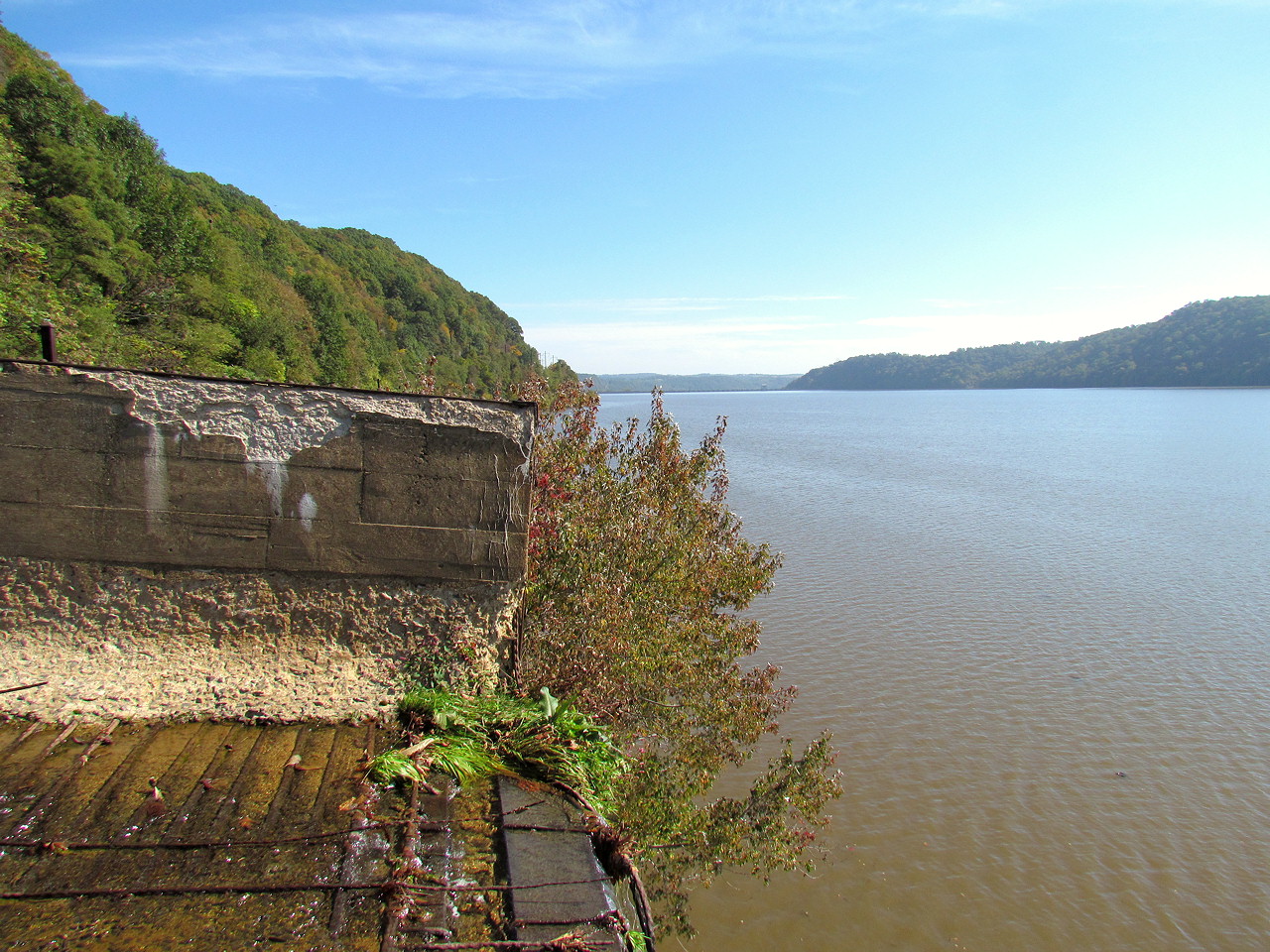Now I said these were considered holy grails because even though the A&S was abandoned in the 1980's and only continued to serve as a 25Hz power RoW for Amtrak, the locations are completely inaccessible due to local topology. To visit all three of the Shoo Flies would require a 7 mile round trip hike from the Safe Harbor Dam to the south or a 9 mile hike in from Blue Rock from the north. In 2007 I used a rather daring shortcut across an active landfill to visit the Mann's Run Shoo Fly, but it was a rather high risk enterprise just to see a bit of historical engineering.
Well fast forward some years and it appears that the State of Pennsylvania has completely robbed the railfan community of one of its more cathartic experiences (as well as destroying a vital rail corridor) by turning the former A&S into the Enola Low Grade Trail. It now takes a sum total of 20 minutes to reach all three Shoo Flies via a bicycle on the immaculately manicured roadbed. Of course that was lost in the journey was partly made up by increased access to a large number of PRR era railroad appliances that were just left in place by Conrail when they ripped up the track.
In today's segment I will explore each of the Shoo Flies and then double back to show off some of the other historic elements featured along the trail. You can find the full set of photos here.
We begin with something completely different. Here is East Penn railway GP9 #1701 sitting near York, PA near US 30.
Heading to the rail trail parking lot we pass through Comulbia, PA with the 1930's vintage COLA tower, which still held the local relay interlocking logic until just a few years ago.
The whole area from Holtwood to Shocks was resignaled by NS to get rid of the Rule 251 operation and US&S 504 code line. Fortunately the catenary structure in this area ws saved from scrapping because it is still used to carry a 25Hz 138Kv power circuit from Safe Harbor to Royalton.
First up is the Mann's Run Shoo Fly. This is the largest of the three streams with a wide trough and high walls.
This one also has the best waterfall effect.

If photos aren't enough here is a video tour of the Mann's Run Shoo Fly.
Fisherman's Run is the smallest Shoo Fly with a very narrow trough. It is also having problems with exposed rebar.
And of course a video tour.
Finally we come to Fly's Run which is the widest of the three, but has rather short walls.
This allows for photos of actual trains on the Port Road below...if said trains ran in daylight on this line, which they don't due to Amtrak's restrictions.
View of the pond above the Safe Harbor Dam.
Fly's Run has a little waterfall effect going on as well.

And of course the video tour.
The little pond and waterfall at the top of Fry's run.

The end of the train is at the famous Safe Harbor Viaduct. Technically the trail continues on the other side all the way to Atglen, but because of health and safety the bridge is barricaded off until the money turns up to fix it.
There was a small concrete PRR watchman's shanty on hand with the obligatory keystone.
Unlike the Conewingo Dam, Safe Harbor still uses its original 1930's gantry cranes.
Coronal discharge hoops on the 138kV insulators.
Another plus was that all of the old position light signal mounts were left intact on the catenary poles. The equipment for the 6600 volt 100Hz power supply and the relay cabinets were also in place. The signal power line was used by the Port Road until about 2009 with one of the generating stations being located at the Amtrak Safe Harbor Substation.
At Milepost 28 one of several slide fences had a sort of Spanish moss look going for it.
Wooden pole PRR slide fence construction. This stuff was way over engineered compared to other railroads, especially those out west.
Closeup of the insulator strings on the out of service 25hz 138kV circuit. Each wire carried + or - 64vK as part of a single phase power system.
This trail is a boon for rock climbers and many of the sheer rock faces had already been outfitted with rope anchor points.
From the trail side the original PRR railings were supplemented with something a bit more child proof such as this example at Fry's Run.
The PRR did use steel I-beam poles for its slide fences as well.
Old and new relay huts at CP-CRESS. The 1937 COLA CTC project was in service for over 70 years before being replaced by modern equipment that will be lucky to last 20.
This is former Conrail class Ne 6 caboose #23832 on static display adjacent to CP-CRESS and painted in PRR colors.
I will leave you all with this PRR catenary gantry equipped with sectionalizing switchgear and a view of the Susquehanna River.
























I have been looking for some quality close up pictures of a K-style poles. Most are to shadowed or to far away. Mostly I want to get the rivet details. Would it be possible to get the last image on this page in hi-res? Or do you have other close-ups to the k-style poles?
ReplyDeleteWhat's a K-style pole?
Delete